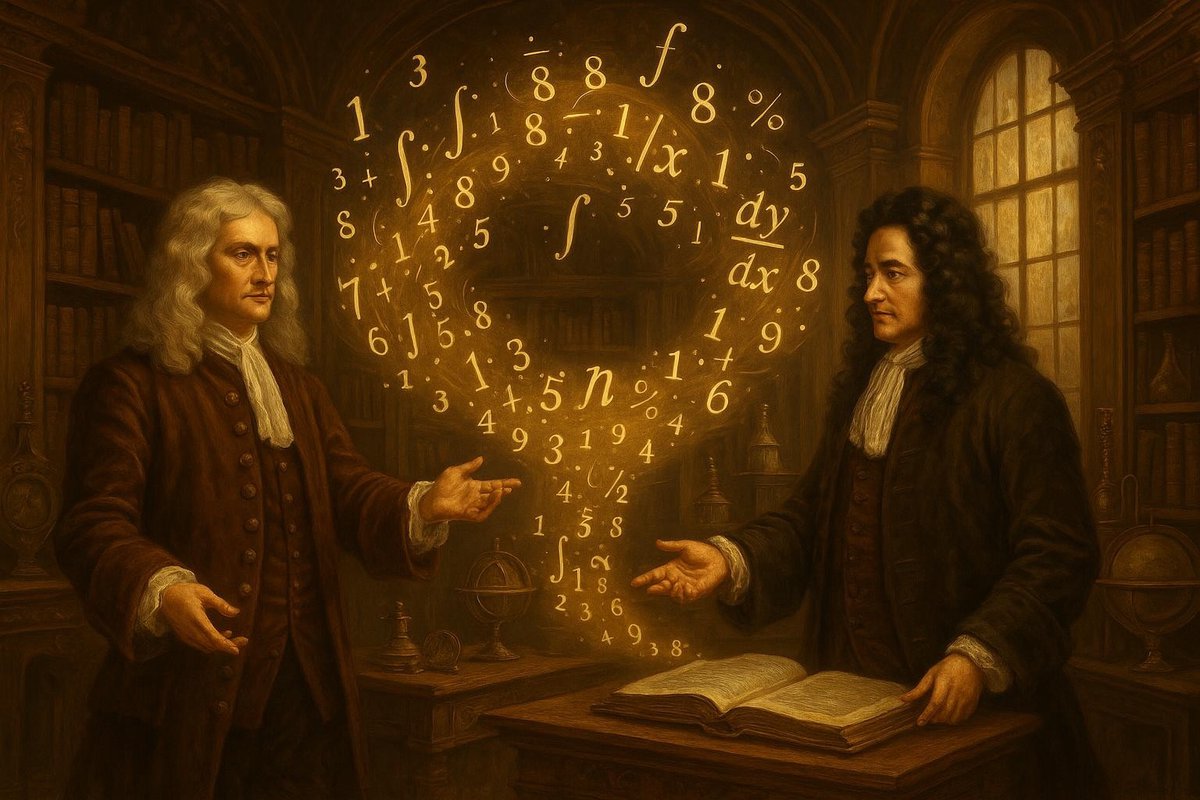
In the late 17th century, two brilliant minds, Isaac Newton and Gottfried Wilhelm Leibniz, independently discovered a mathematical framework that would shape the modern world. This was no ordinary invention – it was the birth of calculus, a language of change and motion, built upon the subtle dance of limits and infinitesimals.
Origins of a New Mathematical Language
Before Newton and Leibniz, mathematics was like a grand orchestra missing a lead violinist. The melodies of geometry and algebra played on, but something seemingly elusive was missing. The Greeks had delved into geometry, and later, algebra found its footing in the East, but the language of change remained unspoken.
- The ancient mathematicians scratched the surface with ideas of infinitesimals, yet lacked a coherent structure.
- Renaissance thinkers began questioning how to measure curves and motions.
Interestingly, as time went on, these questions didn’t fade away. Instead, they grew more pressing with the advent of the scientific revolution. Calculus emerged not from a single spark but from a series of flickering flames ignited by curiosity and necessity. It was this setting, ripe with intellectual fervor, that set the stage for Newton and Leibniz’s revelations.
Newton and Leibniz: The Key Figures
Many people believe that a rivalry brewed between Isaac Newton and Gottfried Wilhelm Leibniz, but in reality, the coincidence of their discoveries was more like a beautiful duet. Newton, contemplating the falling apple, wondered about gravity’s pull on heavenly bodies. Meanwhile, Leibniz, a philosopher at heart, saw mathematics as a tool to understand the world.
- Newton developed his ideas in England, amidst the turmoil of the English Civil War.
- Leibniz, in the peaceful confines of continental Europe, constructed his notation, which is still used today.
Their approaches were distinct yet complementary, like two rivers diverging from a single spring. Newton’s calculus was rooted in the concept of ‘fluxions,’ emphasizing motion, while Leibniz’s embraced differential calculus, focusing on changes in quantities. Each, in their own right, contributed a layer of depth to the burgeoning world of mathematics.
The Turning Point: From Philosophy to Physics
The calculus developed by Newton and Leibniz wasn’t merely an academic exercise. It was a turning point that redefined the intellectual landscape. The implications were vast, offering a new way to describe the natural world.
- Newton used calculus to formulate his laws of motion, transforming physics.
- Leibniz’s work laid groundwork for the calculus of variations and kinetic energy.
No wonder then, that calculus became the backbone of classical mechanics, allowing scientists to predict planetary motions and engineer the Industrial Revolution. It connected the dots between the abstract and the tangible, offering a bridge from philosophical musings to empirical science. This was true magic, proving that mathematics wasn’t just about numbers, but about understanding the universe.
Impact on the World: The Infinite Possibilities
Calculus didn’t just change how people saw the world – it reshaped it. Its influence spread like ripples in a pond, reaching industries and fields far beyond mathematics.
- In economics, calculus models supply and demand curves.
- In medicine, it helps simulate biological processes and spread of diseases.
Of course, the true beauty of calculus lies in its versatility. From the towering skyscrapers of engineering to the intricate algorithms of computer science, calculus is everywhere. It’s a testament to human ingenuity, showcasing our ability to transform abstract thought into practical innovation. The dance of limits and infinitesimals continues, echoing through time as our world evolves.
In conclusion, the simultaneous discovery of calculus by Newton and Leibniz was a pivotal moment in human history. It provided the tools to comprehend and manipulate the forces of nature, setting the stage for modern science and technology. As we look to the future, we can only imagine what new horizons this elegant dance will lead us to.
Fuel Someone Else’s Curiosity: Share this story of mathematical magic with a friend or colleague. Who knows? You might inspire the next great thinker!

Leave a Reply